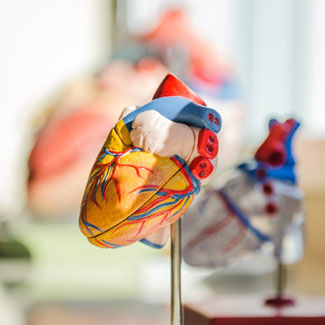Opioid misuse and addiction – including prescription pain relievers, heroin, and synthetic opioids such as fentanyl – present a serious national crisis that affects our healthcare system, public health, and social and economic welfare. In the United States alone, 136 people die every day from an opioid overdose according to […]
Read More
Monitoring of the intra-compartmental pressure should be routine in any unconscious, sedated and uncooperative patient. If the delta pressure remains less than 30 mmHg, in the presence of clinical signs and despite conservative measures, fasciotomy should be performed as an emergency to preserve the function of the limb. Whitesides […]
Read More
The Shaw Haemostatic Scalpel in Paediatric Surgery: Clinical Report on 3,000 Operations Author: U.G. Stauffer Read the Full Article >>
Read More
United States trauma surgeons reported that the clinical assessment using the intra-compartmental pressure monitor, should be utilized in the awake patient and continuous monitoring using the slit catheter is recommended in the obtunded or unconscious patient. Abstract The incidence of acute compartment syndrome is documented to be 3.1 per […]
Read More
Evidence for thermal therapy application as primary or adjunctive headache relief. Physicians have many treatments available for the headache sufferer. Most treatment plans include medication and/or lifestyle modifications, but for multiple reasons, many patients need or desire a safe, self-administered, simple, drug-free alternative for their headache relief. Read […]
Read More
The Estimated Sensitivity and Specificity of Compartment Pressure Monitoring for Acute Compartment Syndrome Authors: MM McQueen, AD Duckworth, SA Aitken, and CM Court-Brown Read the Full Article >>
Read More
Pain is one of the earliest findings in patients who have acute compartment syndrome, but findings on history and exam cannot rule out the diagnosis. The measurement of intra-compartmental pressures using a [STIC Intra-Compartmental] pressure monitor is the most reliable test. Abstract Acute compartment syndrome, otherwise known as a surgical emergency, is most […]
Read More
Persistent and recurrent symptoms of leg pain, cramping, and tightness in any athlete should raise awareness of underlying chronic exertional compartment syndrome (CECS) and warrant early intra-compartmental pressure measurements using a STIC pressure monitor for an effective diagnosis. Abstract Chronic exertional compartment syndrome in athletes commonly represents a diagnostic […]
Read More
The ability for a clinician to promptly diagnose and initiate proper treatment for acute exertional compartment syndrome (AECS) is crucial for the prevention of severe or devastating consequences for the patient. Abstract Acute exertional compartment syndrome (AECS) is characterized by a rise in pressure within a closed fascial space […]
Read More
Hotknife dissection of the latissimus dorsi muscle for dynamic cardiomyoplasty Authors: Masao Takahashi; Shigeyuki Tomita; Hiroshi Ohtake; Nobuyuki Tanaka; Michio Kawasuji; Yoh Watanabe Read the Full Article >>
Read More








